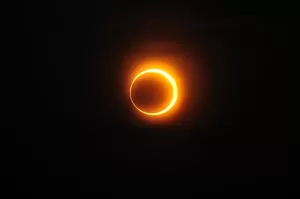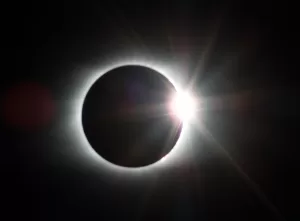During the remarkable event of a total solar eclipse, observers are often enveloped in a surreal experience as daytime momentarily turns into night. But beyond the visual spectacle, some spectators of recent eclipses across Canada and the United States have reported an intriguing phenomenon: a loud boom heard during or shortly after the phase of totality. This sound, distinct from the awe and exclamations of the crowd, has piqued the curiosity of both the public and the scientific community.
Up Through The Atmosphere
The phenomenon prompts an exploration into the complex layers of our atmosphere, where the answers lie. Our planet’s atmosphere is structured into five principal layers: the Troposphere, where our daily weather patterns occur; the Stratosphere; the Mesosphere; the Thermosphere; and the Exosphere. Within the higher regions, solar radiation interacts with gas molecules, causing them to lose electrons and become ions, thus forming the Ionosphere. This electrically charged layer is not just a static shield but a dynamic player in our atmospheric system, responsive to solar activities, including eclipses.
The 2017 Eclipse: A Scientific Breakthrough
The mystery of the eclipse-related sonic boom was recently unraveled thanks to research conducted during the total solar eclipse that swept over North America in August 2017. Scientists from the MIT’s Haystack Observatory and the University of Tromsø, utilizing a vast network of over 2000 Global Navigation Satellite System (GNSS) receivers, tracked the eclipse’s impact on the Ionosphere’s total electron content. Their observations revealed that the rapid temperature fluctuations caused by the eclipse—owing to the Moon’s shadow and the atmosphere’s swift cooling and subsequent reheating—generated atmospheric bow waves. These waves, akin to those created by a boat moving through water, were indicative of a fast-moving temperature change.
Deciphering the Sonic Boom
Further investigation by a team from Taiwan’s National Central University, employing the same GNSS data, discovered that these atmospheric bow waves resulted in a sonic boom within the Ionosphere. This phenomenon, directly following the Moon’s shadow, explains the mysterious sounds reported during recent eclipses.
The Significance of Our Discoveries
Understanding the sonic boom in the Ionosphere not only satiates our curiosity about the peculiar sounds associated with solar eclipses but also enriches our knowledge of atmospheric science. It demonstrates how solar eclipses, beyond their awe-inspiring visual spectacle, provide unique opportunities for scientific exploration and discovery.
As we continue to unravel the mysteries of our universe, the occurrence of such sounds during eclipses serves as a reminder of the intricate interplay between celestial events and our planet’s atmospheric phenomena. The next time you witness a total solar eclipse, listen closely; you might just hear the voice of the cosmos.






